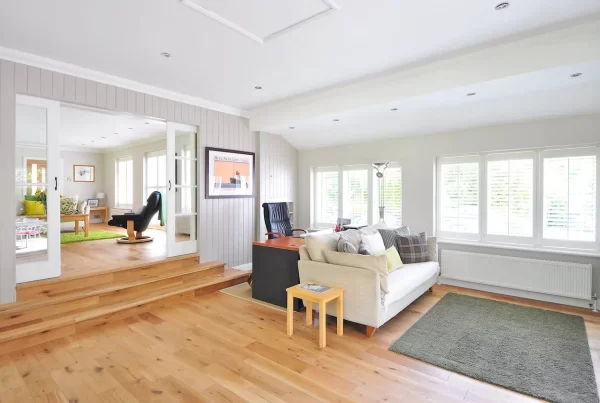Deck Restoration with Odd Job
It’s the time of year when people would like to be biking, hiking, or just relaxing on the deck with friends and enjoying the lovely evenings. If you’re like many, however, this last seasonal activity is impossible because of its shabby condition. You aren’t alone.
The combination of frequent human activity, constant exposure to the elements and the passage of time is enough to cause even the best deck to wear out. Even once the most pressing problems have been dealt with and you’ve made sure that it is both structurally sound and generally free of blemishes, you’re still left without what you had first envisioned: your outdoor space as beautiful as it once was. It’s time to apply a new finish, and the team at Odd Job has some great tips for you.
The first and most crucial step is preparing the wood by cleaning and sanding it. This process not only removes the old finish but also maximizes the wood’s absorbency, ensuring that the new finish lasts longer. However, it’s important to use the right grit abrasive when sanding, as using too fine or too coarse an abrasive can reduce absorbency and cause premature peeling.
Once you’ve prepared the wood, it’s time to apply the new finish. With a wide variety of stains and sealers available, it’s essential to choose the right product for your deck’s specific needs. Some finishes provide protection against UV rays, while others are designed to resist mold and mildew.
In conclusion, refinishing your deck may require some time and effort, but it’s a worthwhile investment that will enhance your outdoor living experience. With Odd Job’s expert tips, you’ll be enjoying your newly-refinished deck in no time.
Cleaning and Sanding
The most difficult and important part of refinishing your deck is preparation. Strip it using a water soluble agent and then pressure wash it to completely do away with the old finish. After giving it a couple of days to dry, it will be time to sand it and deal with those pesky surface fibers that were raised when you first washed it.
Washing and sanding is about more than simply cleaning the wood. It’s about maximizing its absorbency. The more absorbent the wood is, the longer the new finish’s lifespan will be. The problem is that most wood isn’t very well-suited for outdoor finishing projects. New, planed lumber has been so thoroughly polished that it won’t absorb your finishing product very effectively. Conversely, old wood is very absorbent but it’s surface fibers are already somewhat loose and a new finish will pull them off. The result in both cases is premature peeling.
So what is the solution? The world’s largest manufacturer of finishes, Akzo Nobel Coatings, conducted a five-year study to find it. After field trials in Canada and the United States in which various water-based and chemical-based agents were tested, Akzo Nobel concluded that a bright wood surface prepared with a 60-80 grit abrasive powered by a walk-behind, square-buff floor sander produced the greatest level of absorbency and durability. When they tried an 120-grit abrasive, they were surprised to find that the absorbency of the wood was reduced by 30%.
Refinishing a deck can be a daunting task, especially if you’ve never done it before. The good news is that with a bit of preparation and elbow grease, you can transform your shabby deck into a beautiful outdoor space once again. Odd Job’s team of experts offers some valuable tips on how to refinish your deck and bring it back to life.
As the days get warmer and warmer, you shouldn’t settle for stains, cracks or anything else that lessens the enjoyability of your space. Dial 416-520-1161 or just take a minute to fill out our nifty online form and within no time members of our highly-qualified team of professional handymen will begin the process of restoring your old dream deck to all of its former glory.




